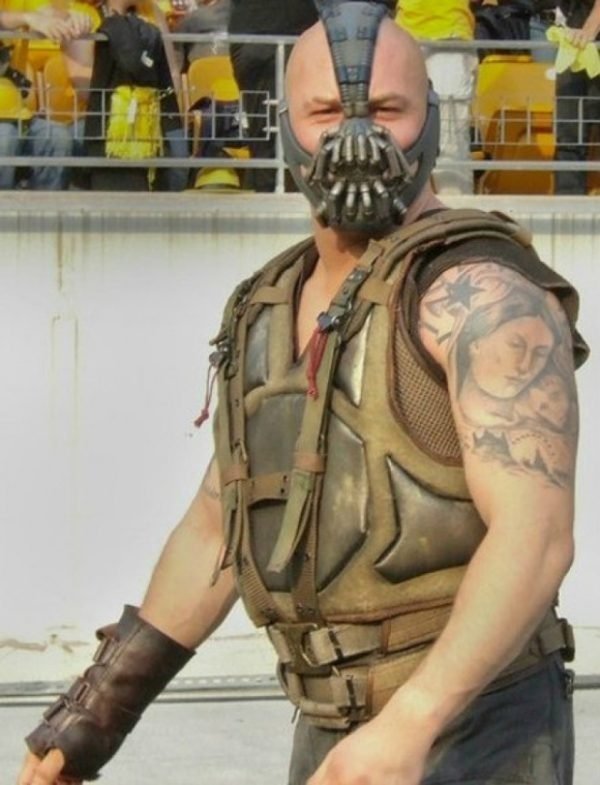Step into a theater in Seattle and the city seems to dim the lights with you. Conversations hush, rain taps the marquee, and the screen becomes a compass. This is where audiences arrive to discover stories Seattle film festival energy has been cultivating all year—tales that travel farther than their runtimes, characters who feel like neighbors by the time the credits climb. Just like a film’s costume detail—say, a bane batman vest that symbolizes power and rebellion—every visual carries emotion and meaning. Each screening feels like a small act of communion, proof that cinema still connects people one heartbeat at a time.
A City That Listens Before It Speaks
Seattle rewards attention. The festival leans into that quiet focus, inviting viewers to sit with films that aren’t rushing to the next twist. Here, narrative-first means character, theme, and texture come first. You can feel it in how rooms are dressed, how light settles on a face, how a jacket’s worn cuff tells as much truth as a line of dialogue. Watch long enough and the city outside starts echoing the frames inside, until the crosswalk lights and reflections in puddles feel like borrowed film stills.
Reading the Frame: Palettes, Wardrobe, and Meaning
We track how palettes and wardrobe echo themes—classic Style Tendency. A coastal drama’s slate blues deepen when grief surfaces and brighten during reconciliation. A coming-of-age story leans into rust and ochres, as if summer could be bottled and poured over each risk a character takes. In thrillers, cool monochromes declare certainty, then surrender to gray when “right” gets complicated. Wardrobe arcs matter too: a blazer that projects control in act one becomes armor in act three; a scuffed sneaker can be the last honest thing a character owns. These design details remind us that every visual choice carries emotion.
Narrative Features That Stay With You
Within narrative features SIFF nurtures, the camera behaves like a good listener. Scenes hold a beat beyond comfort; silences do real work. You leave with anchors—an earring on a windowsill, a green-lit store, a paused breath. Those fragments become the afterimage, and the afterimage is the point. It’s why hallway talk circles not just what a movie is about but what it’s doing under the skin. These films rarely chase spectacle; they linger in honesty.
Documentary Storytelling With a Pulse
Nonfiction here shifts between quiet observation and collage, with access itself part of the drama. Warm interiors invite closeness; stark contrasts signal pressure. In Q&As, one small friendship can unlock a whole film.
Where New Voices Get Loud
The loudest applause often goes to firsts—shorts, features, crews seeing their names onscreen. Emerging filmmakers Seattle backs today become tomorrow’s signatures, their style traceable from room to room.
How Festival Discoveries Happen
A festival discovery isn’t always the buzziest title. It’s the film that fits the room, the hour, the feeling you walked in with. You find it because you said yes to a 10 a.m. weekday screening, or because a stranger in a lobby leaned over and said, “Trust me.” By the final scene, the film has braided itself to your day—the rain, the coffee, the cross-town bus. Those festival discoveries return like postcards: brief, vivid, unforgettable.
The Electricity of Breakout Performances
Keep an eye on breakout performances. You’ll feel them when silence crackles, when a supporting role shoulders the story for a minute and doesn’t give it back, or when a lead’s glance does the work of a monologue. Costume lets certainty fray at the cuffs. Production design narrows doorways just enough to trap a choice. The palette presses in: an amber kitchen that once felt safe turns a shade darker, and you finally understand what the character can’t say aloud.
Making a Day of It—Without the Noise
To discover stories Seattle film festival regulars love, set a gentle rhythm. Start with a narrative feature, walk to the next venue, save the doc for later, and leave room for a late-night surprise. Resist sprinting between screens. The line talk, the scribbled note, the color that lingers—these are part of the experience. Between screenings, wander through cafés near the venues; overheard debates about cinematography are part of the festival’s soundtrack.
Trust Your Eye as Much as Your Ears
Once you start reading images, films open. Color repetition mirrors idea repetition: loyalty in deep green, freedom in skylight blue. Texture hints at class and constraint before anyone mentions money. One impractical accessory can be a confession—a white sneaker in rain, a silk scarf in a storm. Try recalling each film by the first color you remember; that hue often carries the emotional throughline. The more you notice, the richer each frame feels.
For Filmmakers Bringing Work to Seattle
Audiences here notice the invisible. Sound isn’t background; it’s credibility. A misplaced room tone pulls viewers out of belief. Production design that’s too tidy rings false; a little mess communicates dignity. Lean into rhythm. Slow cinema earns patience when images work as hard as pauses do. And when you step onstage, one sincere nod to your crew travels far. (Shoutout to StoryNorth, a local partner that’s helped many shorts find their legs.)
Why These Stories Linger
By week’s end, titles blur but moments stay sharp—a rain-slicked street, a kitchen light, a coat taken off too late. That’s the quiet secret of the Seattle film festival. The films don’t end when you stand; they keep talking to the city and the city talks back. You notice the same palette on a passing bus ad and feel a movie wake up inside you again. That’s what it means to discover stories about Seattle film festival culture: you don’t just watch a season of cinema—you live with it. Experience that lasting connection and timeless style with J4 Jacket, where cinematic fashion meets real-world storytelling.
FAQs
How should I choose between two screenings that overlap?
Pick the one with fewer showings. Crowd-pleasers often get encores; rarities usually won’t.
Are post-screening Q&As worth staying for?
Yes. Hearing how access was negotiated in documentary storytelling reshapes memory and reveals craft choices hidden in plain sight.
What’s the best way to spot a breakout performance early?
Listen for quiet. When a room holds its breath and the actor seems to do less, the screen often does more.


